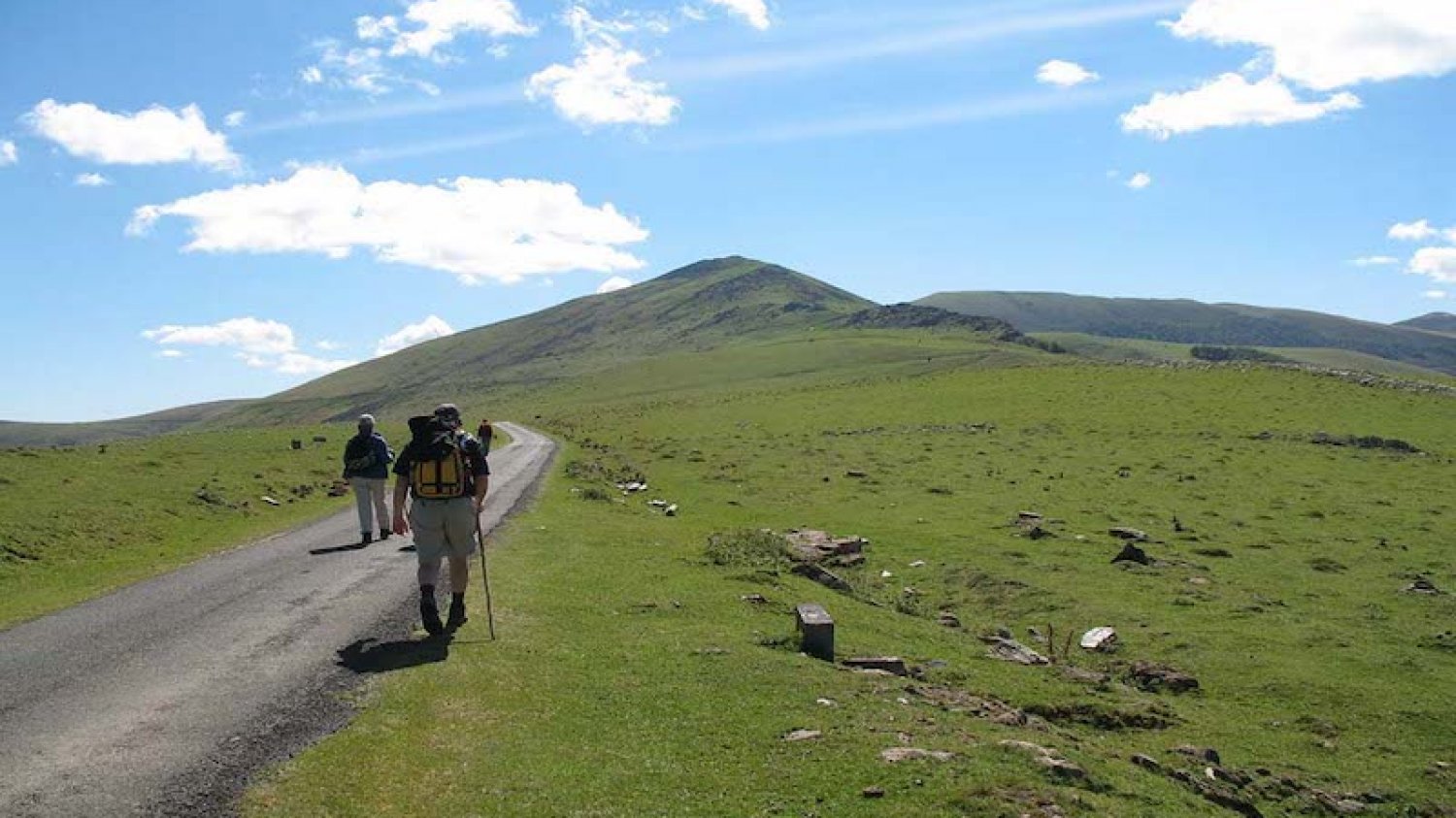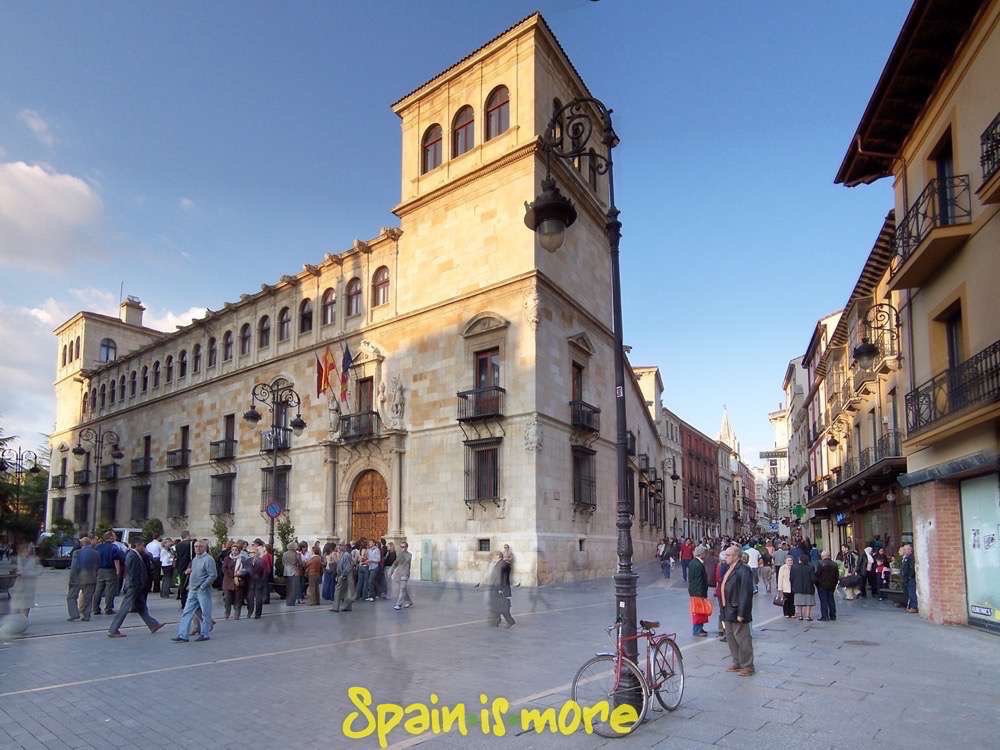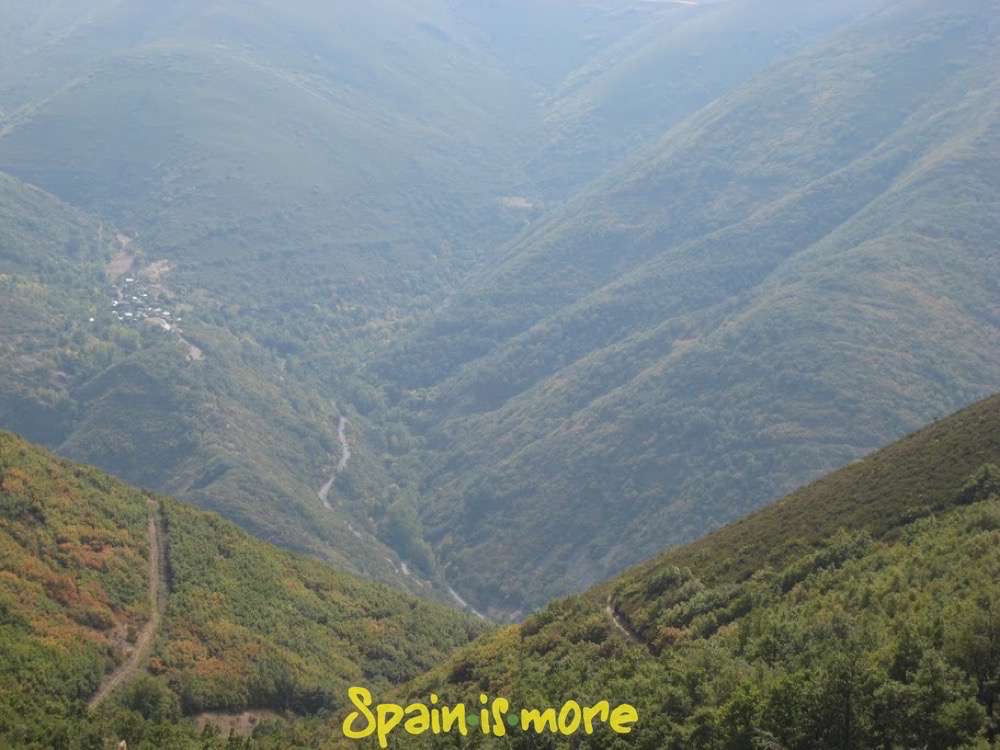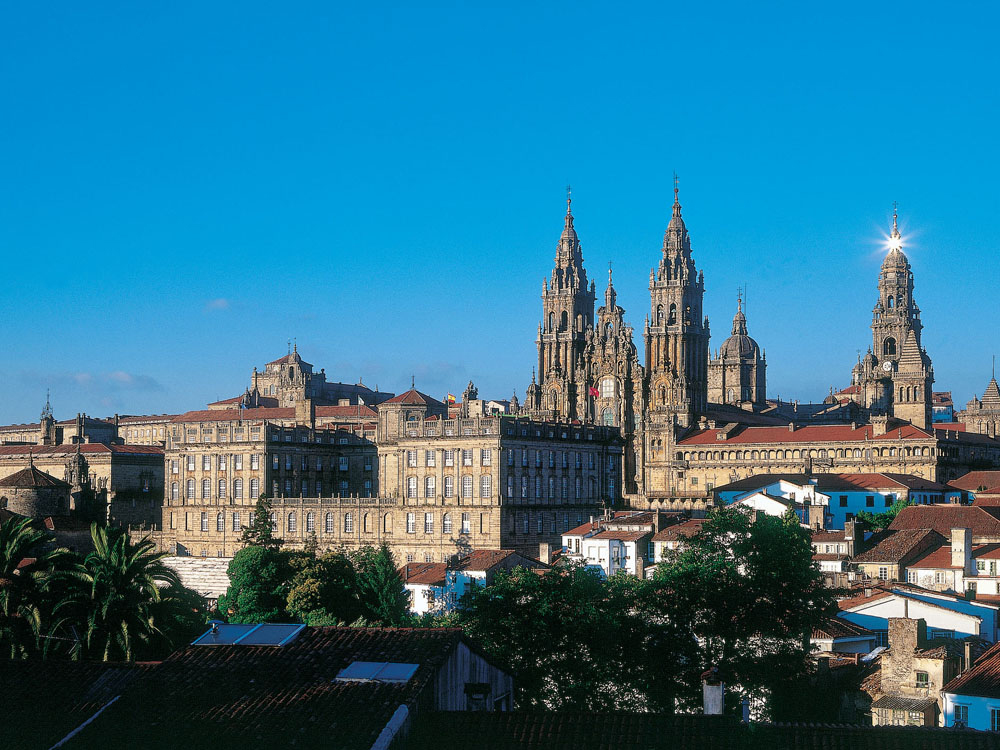
Create your own journey; Experience the best of Northern Spain at your own pace
This website uses its own and third-party cookies, for the proper functioning of the site and to generate usage statistics.
By continuing to browse we understand that you consent to our �ookie policy

2023-11-23
Discover the ultimate guide to the Camino de Santiago, from Saint-Jean-Pied-de-Port to Santiago de Compostela. Explore every section of the French Way, with details on distances, difficulties, scenic beauty, and helpful tips. Perfect for pilgrims.
The journey from Saint-Jean-Pied-de-Port (SJPDP) to Pamplona on the Camino Francés spans approximately 65 km. This section is a pivotal part of the Camino de Santiago pilgrimage.
The first stage of the Camino Francés, starting in St.-Jean-Pied-de-Port, is notably the most challenging segment of the entire Camino de Santiago route. The initial 10 km to the Pyrenees summit, in particular, demand stamina and preparation. Covering a distance of 25 km, this stage involves a strenuous uphill climb, emphasizing the need for moderate physical preparation for hiking the Camino. It's crucial to be well-equipped with essentials such as water and energy snacks, as options for food and supplies are sparse along these 25 km.
Subsequent stages post-Saint-Jean-Pied-de-Port continue to present rugged terrain, characterized by uphill and downhill paths. These stages, integral to the Camino de Santiago experience, require good physical fitness. While these segments may not be as demanding as the first, their complexity should not be underestimated, particularly by those new to long-distance trekking or hiking on uneven terrain.
On a difficulty scale from 1 to 5, with 5 being the most challenging, this section of the Camino to Pamplona could be rated around a 4, depending on individual experience and physical condition.
The segment from Saint-Jean-Pied-de-Port to Roncesvalles is celebrated for its exceptional scenic beauty. The ascent through the Pyrenees offers a breathtaking experience, showcasing a diverse landscape of mountains, meadows, forests, and streams, enriching the pilgrimage to Santiago.
The next two stages rank among the most picturesque on the Camino Francés, weaving through forests, rivers, and quaint villages. The historical and cultural appeal of these villages adds a unique dimension to the Camino de Santiago trek, with local flora and fauna enhancing the natural beauty.
While services are limited in the earlier stages, towns and cities along the route, especially nearing Pamplona, offer more options for dining and shopping, allowing pilgrims to indulge in the local cuisine.
The weather varies seasonally between Saint-Jean-Pied-de-Port and Pamplona. Summers can be hot, requiring hydration and sun protection, while spring and autumn bring moderate temperatures but increased rainfall, necessitating waterproof gear. Winter conditions are harsher, especially in mountainous areas, with potential snow and ice, and many services closed. This underscores the importance of careful planning and appropriate gear for the Camino de Santiago weather conditions.
Yes. However, the first stage from SJPDP to Roncesvalles has its limitations. But have a dialogue Spain is More, if you fear that the first stage is too hard without division, we will find the solution that suits you best.
Find your journey along the French Way of Saint James
Pilgrimage Distance: Camino Francés from Pamplona to Logroño The pilgrimage route on the Camino de Santiago spans approximately 95 km from Pamplona to Logroño, a crucial part of the Camino Francés. This section is a blend of natural landscapes and historical significance, attracting many pilgrims annually.
Hiking Difficulty and Terrain on the Camino Francés While not as strenuous as other Camino sections, the Pamplona to Logroño stretch presents unique challenges. It includes dirt paths and trails through La Rioja's famous vineyards, demanding proper physical preparation. Pilgrims will navigate mixed terrain, with uphill and downhill paths, but primarily flatter and easier routes, especially nearing Logroño.
Moderate Difficulty Rating Overall, this segment is rated moderate in difficulty, less demanding than the Saint-Jean-Pied-de-Port to Pamplona stretch. On a difficulty scale of 1 to 5, with 5 being the most challenging, this section scores around a 2. For a comprehensive breakdown, refer to the "stages" section in Camino guides.
This part of the Camino de Santiago is renowned for its scenic and cultural beauty. The route offers stunning views of La Rioja vineyards and opportunities to indulge in Navarra and La Rioja's gastronomy, including local wineries and renowned wines. Historic churches and monasteries along the way merge natural beauty with cultural heritage.
Ample Services for Pilgrims The Pamplona-Logroño route provides abundant services, with villages offering accommodations, supplies, and local cuisine. Well-equipped for pilgrim support, it facilitates easier planning for daily stages.
Climate Considerations for Pilgrims Weather on the Pamplona-Logroño stretch varies seasonally. Summer brings high temperatures and intense sun, while spring and autumn offer milder conditions ideal for walking, with possible rain. Winter, though milder than mountainous areas, still requires preparation for the cold.
Flexible Stage Planning on the Camino This Camino de Santiago segment allows for flexible stage division, catering to various physical abilities and preferences.
.jpg)
The Camino de Santiago pilgrimage from Logroño to Burgos covers an approximate distance of 120 km. This segment, a highlight of hiking routes in Spain, meanders through the famous wine region of La Rioja, showcasing diverse terrain including dirt paths and rural trails. Rated as a 2 on a difficulty scale of 1 to 5, this section is notably accessible for many pilgrims. For an in-depth understanding, consider exploring "Stages of the Camino de Santiago: Logroño to Burgos" for meticulous planning.
This stretch of the Camino Francés captivates with its blend of natural and cultural beauty. From the picturesque vineyards of La Rioja to the expansive plains of Burgos, this journey offers a tapestry of landscapes. Pilgrims can immerse in the rich gastronomy of the region, traverse historic villages, and marvel at significant monuments. This journey is more than a walk; it's a cultural immersion.
The route from Logroño to Burgos boasts commendable services. Although distances between villages can vary, amenities such as supermarkets, banks, and shops are readily available. This makes the Camino de Santiago not just a spiritual journey, but also a comfortable one, especially for those new to long-distance walking.
Understanding the climate is key for those planning the Camino de Santiago. Summers in La Rioja and the Meseta are warm, while the continental climate can introduce higher temperatures. Spring and autumn present ideal conditions, with a temperate and pleasant climate. Winters, however, are colder, especially on the Meseta. Adequate clothing is essential for protection against varying temperatures.
Yes.

The pilgrimage route from Burgos to León, an essential part of the Camino Francés, covers approximately 175 km. This segment is renowned for crossing the vast Castilian Plateau, offering a characteristically flat and open terrain. Despite its length, this section is generally rated around a 2 on a difficulty scale of 1 to 5.
The main challenge here is the monotony of the landscape and exposure to the sun and wind on the Plateau. For a detailed planning of each stage, we recommend checking the "Stages" section for each of the Camino de Santiago journeys.
Along this stretch of the Camino de Santiago, pilgrims will enjoy a unique experience of natural and cultural beauty. The path from Burgos to León traverses long plains of the Plateau, offering a vast and open landscape under the expansive sky. This segment also passes through historic villages with ancient churches and monuments, enriching the experience with a deep sense of history and tradition.
Services along the Camino de Santiago route from Burgos to León are adequate, although pilgrims should be prepared for longer stretches between villages. Along the way, you will find everything you need, including supermarkets, banks, and shops, particularly in larger cities and towns.
The climate on this stretch of the Camino de Santiago varies depending on the season. Summers on the Plateau are known for their high temperatures and sun exposure, while spring and autumn offer milder and pleasant walking weather. Winters can be cold and windy, requiring proper preparation and warm clothing.
This stretch allows for some flexibility in dividing the stages, although the distance between accommodations may be greater than in other segments of the Camino Francés. It is advisable to plan ahead to tailor the stages to your personal capabilities and preferences
Find your journey along the French Way of Saint James

The pilgrimage stretch from León to Sarria on the Camino Francés covers approximately 195 km. Known for its diverse landscapes and increased pilgrim traffic, it's generally rated around 2.5 on the 1 to 5 difficulty scale. This segment offers both flat and hilly stages, with the Villafranca del Bierzo - O Cebreiro stage being the most challenging but divisible. Notably, it features historical attractions like the Cathedral of León and the Episcopal Palace of Astorga, making it one of the most intriguing parts of the Camino Francés.
This segment combines natural and cultural beauty. Pilgrims will pass by the Cruz de Hierro and the Monastery of Samos, among other points of interest, amidst a varied landscape from urban areas to mountains. Many consider these stages the most beautiful, with picturesque villages, stone houses, animal-filled fields, and peaceful forested areas. Nature accompanies you until Santiago de Compostela, a charming and lively city.
Services from León to Sarria are good, with accommodation and dining options in major cities and towns.
The climate varies by season, with pleasant summers and cold, damp winters. Prepare for rain, especially in stages near Sarria.
Most stages can be divided to suit pilgrims' needs.

The Camino de Santiago stretch from Sarria to Santiago de Compostela is one of the most popular and accessible routes, covering approximately 115 km. Rated around 2 on the 1 to 5 difficulty scale, it offers a smooth terrain with few significant elevations, suitable for both experienced and novice pilgrims.
This route offers a unique blend of natural beauty and cultural richness. As you progress, you'll immerse yourself in stunning Galician landscapes, passing through lush forests, picturesque villages, and beautiful rivers. Alongside the natural beauty, you'll encounter cultural gems like the Romanesque church of Barbadelo and the charming village of Portomarín. Of course, the highlight is the majestic Santiago de Compostela Cathedral, where countless pilgrims complete their journey each year.
The Sarria to Santiago route offers a wide range of services for pilgrims, including restaurants and shops to meet all your needs. The pilgrim support infrastructure is robust, ensuring a comfortable and safe experience.
The climate in this part of the Camino de Santiago is temperate and oceanic due to its location in Galicia. Summers are mild with pleasant walking temperatures. However, keep in mind that Galicia is known for its rain, so waterproof gear is advisable, especially in autumn and winter.
Stage planning in the Sarria to Santiago stretch is flexible due to abundant accommodations along the route. You can divide your journey into shorter stages, adjusting to your pace and preferences.
If you still have questions after reading this information, please don't hesitate to contact us. We'd be delighted to assist you. If you're ready to embark on the Camino, explore our various trips along the Camino Francés and book with us. We'll help make your journey an unforgettable experience.
Back